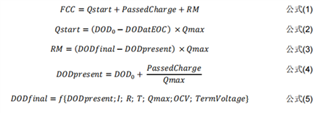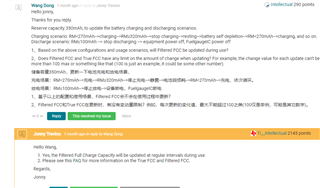Hello,
If batteries with different degrees of aging are inserted, load the FS file made with the new battery after power on.
1. Is filtered FCC values obtained after FS loading the same?
2. If different, which parameters in the following formula will change?
3. What are the reasons for the parameter changes?

Best Regards!
Wang Dong





